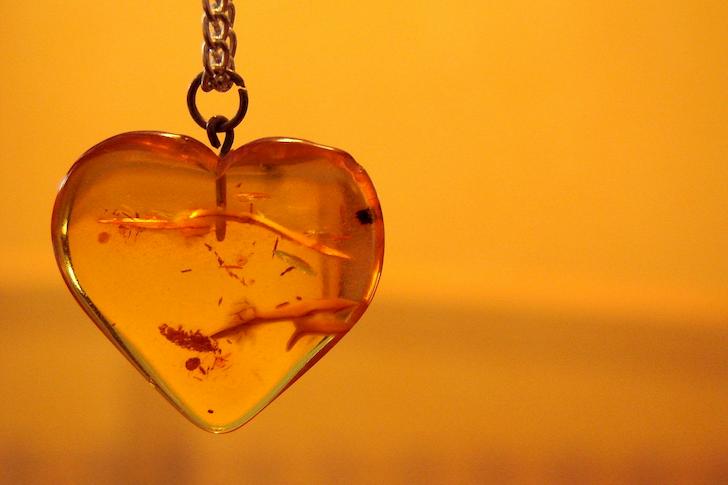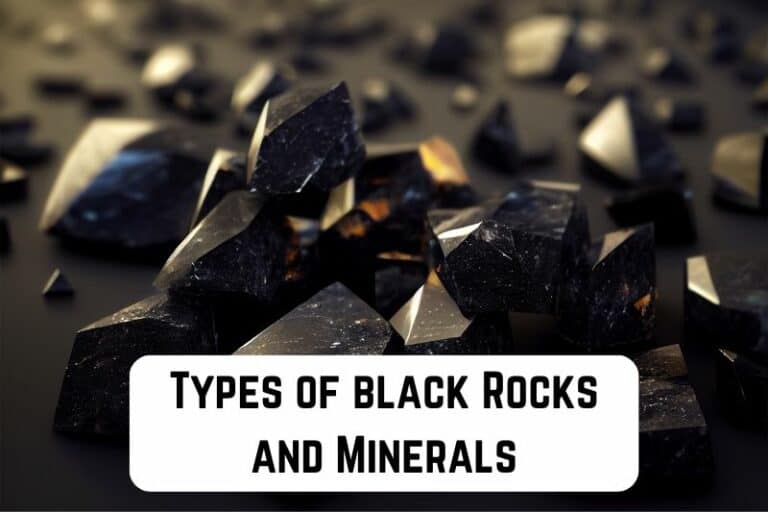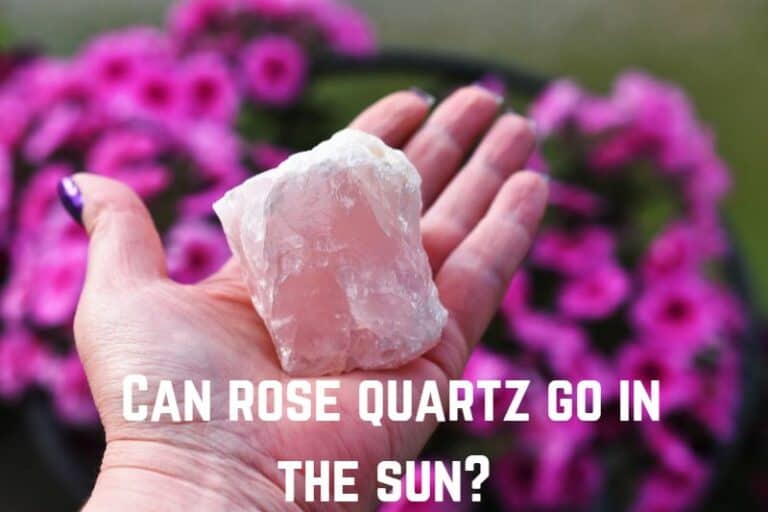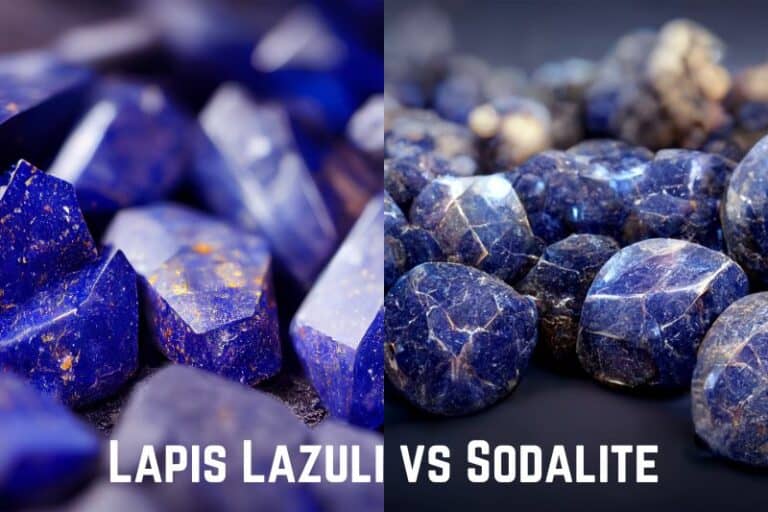Can Apatite Go in the Water? (And Salt Water?)
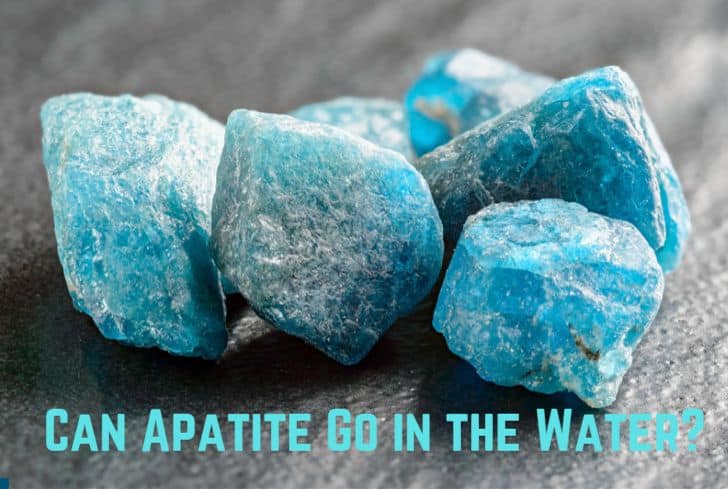
Apatite is a group of phosphate minerals (usually hydroxyapatite, fluorapatite and chlorapatite) that have similar chemical and physical properties. It is often mistaken for other minerals like topaz and peridot, which is also the reason behind its name; “apatite” is derived from the Greek term apatáō, which means “to deceive”. Over 75% of apatite reserves are in Morocco and Sahara.
Have you ever wondered if apatite can go in the water? In this article, we are going to discuss just that. We will begin with the properties and uses of apatite. Then we will look at the stone’s interaction with water, sun, and salt water. Finally, we will talk about cleaning and taking care of apatite.
Read: Can Black Obsidian Go in the Water?
Can Apatite Get Wet?
Yes, apatite can get wet, although it is not recommended to immerse it for too long. Apatite has a value of 5.0 on the Mohs Hardness Scale, which is exactly the minimum value required for minerals to be safe underwater. So, while it can be cleaned with water, it should not be kept in water for prolonged periods.
Mohs Hardness Scale is a relative measure of a mineral’s resistance to scratching. It also indicates a mineral’s relationship with water. Usually, a value above 5.0 means that the mineral is safe to go underwater.
Apatite has the exact value as the threshold. While it can survive underwater, it shouldn’t be kept immersed for long periods. Water enters the crevices of stones and expands the cracks. These fissures can slowly damage the structure of the stone.
Water also tarnishes the appearance of stones by stripping off their polish, making them look duller. It also encourages fissures, which can damage the optical properties of stones.
Properties of Apatite
These are the properties of apatite:
- Appearance: Apatite is usually green in colour but can also be brown, yellow, blue, pink, or colourless. In terms of diaphaneity, the stones range from translucent to translucent. The transparent variants with vivid colour and good clarity are highly valued as gemstones. The stone shows a vitreous to subresinous lustre.
- Composition: Apatite is a group of phosphate minerals, usually hydroxyapatite, fluorapatite and chlorapatite. Each of these has high concentrations of OH−, F− and Cl− ions respectively in the crystal. The formula of the admixture of the three common endmembers is written as Ca10(PO4)6(OH,F,Cl)2. Most apatite is fluorapatite; hydroxyapatite is less common while chlorapatite is the rarest.
- Hardness: Apatite has a value of 5.0 on the Mohs Hardness Scale and is used as an index for that value. It is a rather soft mineral meaning that it can be scratched easily. It also has low toughness, so it will break easily. Its relative softness is what allows us to distinguish it from tourmaline and beryl in the field. Because of its low hardness and toughness, it is too fragile for use in most jewellery types.
- Formation: Apatite is formed in a variety of geologic conditions, and it is found in igneous, metamorphic, and sedimentary rocks. The most important deposits are sedimentary rocks of marine environments where phosphatic organic debris (teeth, bones, faecal material, etc.) accumulate and mineralize. Apatite also occurs as hexagonal crystals in hydrothermal veins and pegmatite pockets.
- Optical Properties: In rare cases, specimens of translucent apatite contain fine silk of parallel rutile (titanium oxide, TiO2) crystals. When these are cut in cabochons with the silk in the direction parallel to the bottom of the stone, they exhibit a chatoyance known as “cat’s eye”. The light reflects from the tiny inclusions to form a thin band across the stone’s surface. Check out this video by AJSGems to see the cat’s eye effect of apatite.
Besides these physical properties, apatite is also believed to have several spiritual properties. It is said to decrease appetite/hunger while enhancing creativity and learning. Wearing apatite is considered good for enhancing focus, gaining clarity, and finding unconditional love.
Read: Can Hematite Go in Water?
Uses of Apatite
These are the different uses of apatite:
- Fertilizers: Phosphate rocks and phosphorite get their phosphorous content mainly from the presence of apatite minerals. These are used to produce phosphate fertilizer, and it is the only mineral that can satisfy the fertilizer demand of the world.
- Chemical Industry: Besides creating fertilizers, apatite is also used to produce animal feed, supplements, different kinds of acid (phosphoric and hydrofluoric), elemental phosphorous, and phosphate compounds for the chemical industry.
- Source of Elements: Occasionally, apatite serves as a source of uranium and vanadium, which are present as trace elements in the mineral. It is also a proposed host material for the storage of nuclear waste, along with other phosphates.
- Gemstones: Apatite is also sometimes used as a gemstone. Its low hardness and toughness make it unsuitable for many types of jewellery, but it is still cut into cabochons. Transparent stones with vivid colour having chatoyance are most valued.
- Ore Mineral: Apatite contains considerable amounts of rare-earth elements and serves as an ore for those metals. This is better than traditional rare-earth ores like monazite because apatite is not very radioactive and does not pose an environmental hazard.
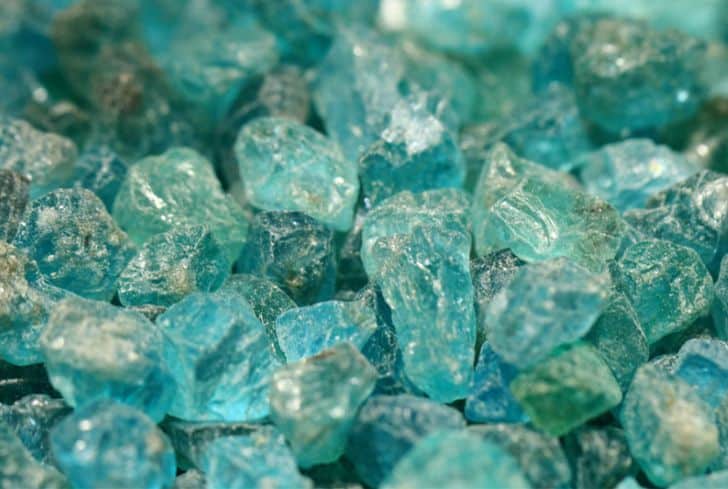
Can Blue Apatite Go in the Water?
Yes, blue apatite can go in the water. All specimens of apatite have a value of 5.0 on the Mohs Hardness Scale. While they are soft minerals, they can survive underwater for short periods. However, like all minerals, they should not be immersed for long.
Apatite is usually green in colour but some specimens can be blue. When these are vivid and transparent, they are highly valued. Chatoyance can increase their value even further.
It is safe to clean blue apatite by immersing it in a soap-water solution for a short time. However, it should not be left immersed for a prolonged duration as the water can damage the structure and dull the appearance of the stone.
Can Apatite Go in the Sun?
It is not recommended to put apatite in the sun. While leaving stones out in the sunlight is a common way of recharging them, it is not recommended for all stones. Apatite is a soft mineral, and when left in sunlight, it can lose its colour.
Recharging stones in the sunlight is a popular practice, but one must always check the properties of the stone before doing so. Apatite is a soft and brittle mineral. It is quite sensitive to heat, which is why it should not be put in the sun. Sunlight will make its colour fade.
Instead of sunlight, you can try recharging your apatite by leaving it in the gentle light of the moon.
Can Apatite Go in Salt Water?
No, apatite should not be put in salt water. Even prolonged water immersion is harmful to soft stones like apatite, which has a value of only 5.0 on the Mohs Hardness Scale. When we bring salt into the mix, it makes the corrosive process even worse.
Salt, when dissolved in water, can enter the crevices of stones. These particles stay even after water evaporates and they expand the cracks. These fissures slowly damage the structure of the stone. Salt water also tarnishes the appearance of the stone.
Salt can also react adversely with the elements of the mineral, especially those containing iron. Saltwater hastens the rusting process by making the metal lose its electrons more easily.
What Crystals Cannot Go in the Water?
Water, in general, is corrosive to minerals. It damages their structure and tarnishes their appearance. Moreover, minerals containing iron can get rusted in water. For crystals with a value below 5.0 on the Mohs Hardness Scale, this corrosive effect is much greater, and they should never be immersed in the water.
Here is a list of minerals that should never go in water:
- Angelite
- Azurite
- Hematite
- Labradorite
- Lapis Lazuli
- Malachite
- Pyrite
- Tiger’s Eye
- Unakite
- Zircon
How to Clean and Take Care of Apatite?
Follow these steps to clean apatite:
- Mix a soft detergent/soap with lukewarm water.
- Immerse the stone in the solution and clean it with a soft brush.
- Rinse it under running water for a few minutes to remove all soap.
- Let it air dry. Make sure you twist it a few times to ensure that all the water is out of the crevices.
Apatite is an extremely soft and brittle stone, so you need to be extra careful in its care. It has a value of 5.0 on the Mohs Hardness Scale, which is even less than that of household dust (7.0), so keep it wrapped in a soft cloth or a fabric-lined box.
You should also keep it separate from other stones, as they can easily scratch apatite’s surface. Apatite is also sensitive to heat and acid, so do not use cleaning methods other than the one discussed above, that is, soap-water solution.
Conclusion
In this article, we discussed whether apatite can go in the water or not. With a value of 5.0 on the Mohs Hardness Scale, apatite is a relatively soft mineral. While it can go in the water, it should not be immersed for long. We looked at the properties and uses of apatite. Then talked about its interaction with water, salt, and sunlight. Finally, we learnt how to take care of apatite.

